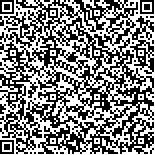下载中心
优秀审稿专家
优秀论文
相关链接
摘要

风云3号B星(FY-3B)上的微波成像仪(MWRI)通过10.65 GHz,18.7 GHz,23.8 GHz,36.5 GHz和89.0 GHz 5个频率的双极化通道对地球表面进行监测。自卫星发射至今,MWRI资料的地理定位误差还未进行深入研究。为了提高FY-3B MWRI L1级数据地理定位精度,基于海、陆响应的升、降轨亮温差理论NDM(Node Differential Method),通过卫星位置和速度矢量建立卫星姿态模型、采用非线性最优化方法估计卫星姿态偏差,进而对MWRI 89 GHz通道的地理定位误差进行分析与订正。结果表明,2015年1-9月份俯仰、滚动和偏航角度的平均偏差分别为-0.220°,0.068°和0.062°,对应沿轨误差大约3-4 km,跨轨误差小于1 km。定位误差订正后,地中海、澳大利亚区域海岸线附近的升降轨亮温差明显减小;观测亮温在红海和南美洲东南部区域的分布和海岸线更加吻合,定位精度得到明显提高。
The geolocation accuracy of meteorological satellites is a key factor in remote-sensing applications. The microwave radiation imager (MWRI) onboard the FengYun (FY)-3B satellite provides measurements of the Earth's atmosphere and surface at 10.65 GHz, 18.7 GHz, 23.8 GHz, 36.5 GHz, and 89.0 GHz with dual polarization. Although FY-3 MWRI data have been widely distributed to the user community, their geolocation accuracy must be corrected to render the MWRI data useful for quantitative remote sensing. To improve the geolocation accuracy of FY-3B MWRI measurements, a method based on the brightness temperature difference between the ascending and descending orbits is used in the conical scanning MWRI at the 89 GHz channel and called Node Differential Method (NDM).
The core principle of the geolocation error correction algorithm is minimizing the number of pixels along the coastlines, where the node difference in brightness temperature is greater than the threshold (20 K) and the distance from the coastlines near the Mediterranean Sea is less than 100 km. In this study, a satellite attitude model (satellite coordinate system) is established based on the vectors of the satellite position and velocity to estimate the satellite attitude angles, and a nonlinear optimization algorithm is used to minimize the objective function. This algorithm can avoid the effect of the tuning order of pitch, roll, and yaw in the traditional method. The satellite attitude offset (i.e., pitch, roll, and yaw) can be derived and further utilized to adjust the satellite attitude. After the satellite attitude angle correction, the geolocation errors in the MWRI at the89 GHz channel are corrected.
Results show that the FY-3B MWRI at the 89 GHz channel has the mean offset of the satellite attitude, with the pitch, roll, and yaw angles from January to September of 2015 being –0.220°, 0.068°, and 0.062°, respectively. The mean geolocation error in the along-track direction is approximately 3-4 km, and that in the cross-track direction is less than 1 km at 89 GHz. The geolocation errors are stable during this period. They exist in the Mediterranean Sea, Australia, Red Sea, and Southeast of South America in the MWRI L1 data. The geolocation errors are detected from the high absolute values of brightness temperature difference between the ascending and descending orbits near the coastal regions and from the maps of brightness temperature compared with the coastlines.
After geolocation error correction, the MWRI geolocation accuracy is improved at the 89 GHz channel. In this study, the geolocation error correction algorithm is applied to the selected coastal regions from the middle and high latitudes of the north and south hemispheres of Earth. This algorithm can be extended to global measurement correction. The attitudes normally explain the status and stability of the satellite. Although the geolocation error can be corrected by adjusting satellite attitude offset, other factors, such as sensor mounting, uncertainty in the ephemeris data, or timing error, must be considered in future studies to improve geolocation accuracy.

